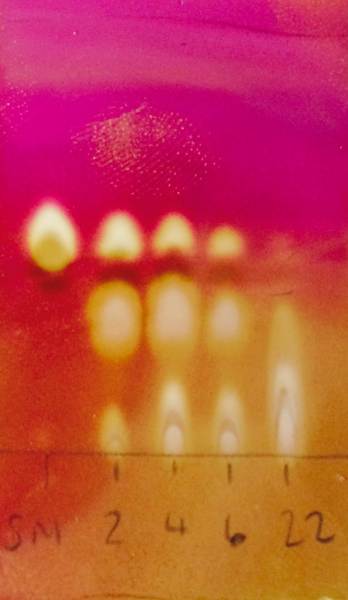
Introduction
Chromatography has two main uses: it is either used to test how pure something is, or is used as a technique to purify something from a mixture.
Chromatography is vital for any chemical research, because a chemical reaction rarely gives us 100 % pure product; we usually get some side-products, and some unreacted starting material that we need to separate from our desired product.
The Environmental Agency uses chromatography to test drinking water and to monitor air quality. Pharmaceutical companies use chromatography both to prepare large quantities of extremely pure materials, and also to analyze the purified compounds for trace contaminants. Chromatography is used for quality control in the food industry, by separating and analyzing additives and proteins, and is used for finding drug compounds in urine or other body fluids, for example when testing athletes for drug use. To read more about industrial applications of chromatography, click here.



The word ‘chromatography’ comes from the greek ‘chroma‘, meaning colour, and ‘graphein’, meaning write, as the technique was originally used to separate pigments. However, chromatography can be applied to almost any chemical separation of mixtures, and is not restricted to coloured compounds. Chromatography can be used to analyse the purity of a sample (analytical chromatography) and to separate a sample into its different components (preparative chromatography). The only difference between these two uses is the scale at which you perform the separation; to analyse the sample, you only need to separate enough to be able to visualise what is in your system (typically nanograms of material, i.e. 10-9 g, are separated by thin layer chromatography (TLC)), whereas the separation of several grams of material requires large columns packed with the stationary phase.

All chromatographic techniques depend upon the chemicals distributing differently between two phases; the mobile phase and the stationary phase. The mobile phase may be either liquid or gas, and the stationary phase may be either solid or liquid.
The general principal of any type of chromatography is shown in the animation:
The molecules interact differently with the mobile and stationary phase, and therefore travel (‘elute’) down the column at different speeds, separating out; in the video above the green molecules adsorb better to the stationary phase than the red molecules, and are therefore carried slower in the solvent.
There are several different types of solid-liquid chromatography techniques available for chemical separation, some of which are summarised below:
- Adsorption chromatography – usually on silica or alumina gel, to separate many organic molecules, as long as they are not too polar that they ‘stick’ to the stationary phase.
- Reverse-phase chromatography – this is usually done on special pre-packed columns with high pressure to flow the eluent through, to separate polar molecules. In the organic laboratory this is normally performed using HPLC (high performance liquid chromatography).
- Size-exclusion chromatography – this is technique used to separate large macromolecules (such as polymers) based on their size.
- Electrophoresis – this technique is often used in biosciences to analyse DNA. Electrophoresis is a type of chromatography that uses an electric field to separate mixtures. To read more, take a look at the University of Birmingham resource here.
If the chemicals that you are trying to separate are relatively volatile gas chromatography (GC) can be used. This technique is usually only used analytically, and the components you are trying to separate must be able to get into the gas phase and remain stable at temperatures under 300 oC.

This work is licensed under a Creative Commons Attribution 4.0 International License.